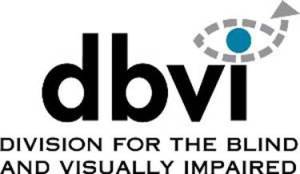Navigating Windows
The Windows Desktop
The Windows desktop is a space for programs, folders, and files. Users can use the desktop to open programs and files. Many programs and folders will have shortcuts on the desktop.
Move to the desktop | Windows + D or Windows + M
Move through desktop icons | Up arrow, down arrow, left arrow, and right arrow
Open a desktop icon | Enter
Concept: First Letter Navigation on the Desktop
Moving around the windows desktop with the arrow keys can be a challenge. First key navigation can make moving around the desktop easier. Press the first letter of a desktop icon’s title and your JAWS focus will move to it.
For example, if I press “M” on my desktop, my focus will move to Microsoft Edge. Press the same key again and your JAWS focus will move to other icons with the same first letter in their title. For example, on my desktop, if I press “G” I will first move to Google Docs. If I press G again (with my focus on Google Docs), I will move to Google Sheets, and if I press it again I will move to Google Slides.
The Start Menu
We will learn about the Windows start menu next. Users launch searches from the start menu. Users can also find applications and recent documents on the start menu.
Open and move to the start menu | Windows Button
Concept: Windows Search
Pressing the windows button will open the start menu. Your JAWS focus moves to the Windows search bar when the menu opens. The Windows search allows users to type searches for programs, files, folders, and more. The Windows search can be a convenient way to launch applications.
For example, if I press the windows button and then type “W-O-R-D” and press enter, Microsoft Word will open.
The Taskbar
The taskbar is another location we can use to launch programs. Users can add program shortcuts to the taskbar for easy access. We will learn to add shortcuts to the taskbar in the future.
Move to the taskbar | Windows + T
Move between taskbar icons | Left and right arrow
Open taskbar icon | Enter
Concept: Taskbar Shortcuts
Taskbar shortcut keys are an easy way to open programs. Launch pinned programs on the taskbar by pressing the windows key and number keys. Starting from the left, the first icon’s command key is Windows button + 1. The next icon’s key command is Windows + 2, and the command keys continue in this way. You can use these taskbar shortcut keys when JAWS is off.
The System Tray
You can find volume, Wi-Fi settings, time and date, and more in the system tray.
Concept: The Select a System Tray Icon Dialog
The system tray dialog makes it easy to move through options in the system tray.
Open the select a system tray icon dialog | Insert + F11
Navigate the system tray dialog | Up and down arrow
Right click on a system tray icon | Enter
Left click on a system tray icon | Press tab twice to move to the left click button and press enter
Announce time | Insert + F12
Working with Applications
Applications Windows
Next we will learn some basics for working with programs. We will learn about working with specific programs in future lessons.
Close application | Alt + F4
Hear window title | Insert + T
Concept: Alt + Tabbing to Switch Between Applications
You can use Alt + Tab to move between two or more program windows. Alt + Tab is a special key command. We press Alt and Tab in different ways to move in different ways. Pressing Alt and Tab at the same time will move you between the last window you visited and the current window. This works great when you only have two windows open.
When you have more than two windows open, we will use Alt + Tab in a different way. Holding down the Alt key and pressing tab will move you between all open windows. When you find the window you want, let go of Alt.
For example, I have Word, JAWS, and Outlook open on my computer. My focus is on Word. I want to move to Outlook. I press Alt + Tab and hold down Alt. I hear JAWS announced. Continuing to keep Alt pressed, I press Tab again. I hear “Outlook” announced. I release Alt and I find that I am now in Outlook.
Switch between Application windows | Alt + Tab
The JAWS Window
The JAWS window is the application window for JAWS. The JAWS window allows users to:
- Update settings
- Get training and technical help
- Check for JAWS updates
We will learn more about the JAWS window later on.
Move to JAWS | Insert + J
Shutdown JAWS | Insert + F4
